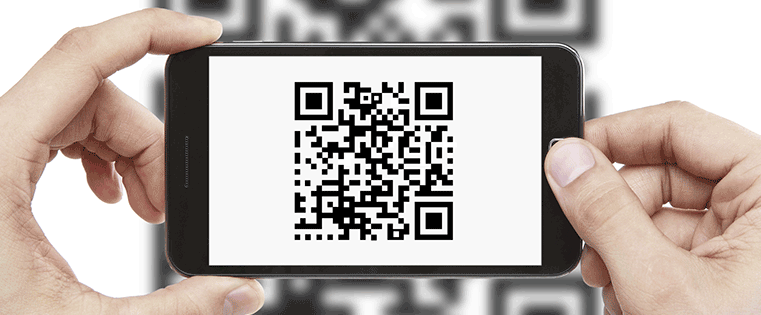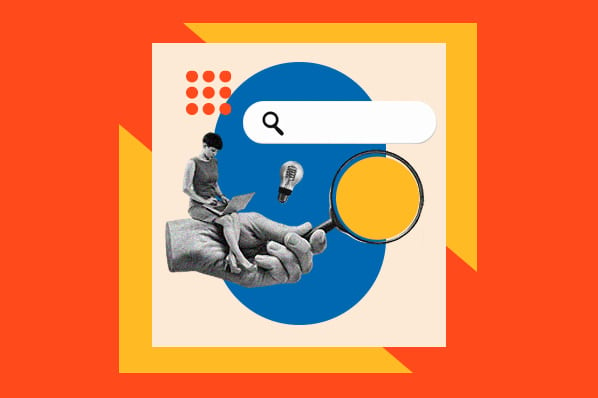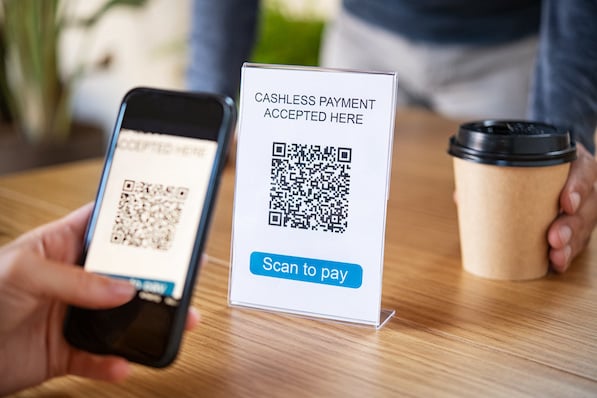Just a few years ago, QR codes seemed to be "the next big thing." Shop windows, food labels, band fliers, magazine advertisements -- those distinct little black-and-white squares were everywhere, vying for our attention.

And while small business owners and marketers thought they'd hit the jackpot, the QR code trend didn't become as popular with consumers as some had predicted. A 2013 survey found only 21% of American smartphone owners say they've ever scanned a QR code, and just 2% say they scan a QR code at least once per day.
You might think that, in an age when consumers tend to keep their smartphones close by at all times, an application that connects the physical and digital worlds -- kind of like Instagram, FitBit, and thousands of other apps do -- would take flight.
But I'll be honest here: I've never scanned a QR code in my entire life, and I'm pretty tech-savvy. I can't even recall watching a friend scan a QR code, either. But I realize I'm a sample size of one, and I've heard people argue -- marketers especially -- that QR codes are still alive and well. I found myself thinking, could that even be possible?
Download our free guide here to learn how to create QR codes for yourself.
So I decided to look for success stories and data to see whether I was ill-informed or QR codes really are still a thing. Though I could hardly find a data point that was less than two years old, I'll tell you what I did find, what I think it means, and what marketers should do about it.
Are QR Codes Dead?
Like I said, this isn't an easy question to answer because of the limited data. But the data I did find suggests that QR codes are not widely used.
For example, Inc's 2012 research found that 97% of consumers don't even know what a QR code is. Digital business analytics company comScore found that 6.2% of the total U.S. mobile audience scanned a QR code on their mobile device in 2011.
Since 2011, the number of mobile users has increased, especially among the younger population, while QR codes seem to have maintained steady popularity and visibility. According to comScore's report, the number of people who have scanned a QR code seems to have plateaued since 2012: As the number of smartphone users continues to rise, the number of consumers scanning QR codes remains the same.
trend is out of style, or are some of them actually seeing real success? After all, it's understandable that we're constantly looking for ways to bridge offline and online marketing in our internet-driven world -- so to us, links you can "click on" in real life are a godsend.
Data from MarketingCharts suggests that the average marketer's view on QR codes is "somewhat at odds with the consumer statistics. Whereas relatively few consumers say they're actively scanning QR codes, marketers are finding them to be quite an effective mobile marketing tactic." To be specific, of the marketers who responded to an Experian survey about the effectiveness of QR codes as a mobile marketing tactic, 29% of them rated QR codes very effective, and another 66% effective.
So what does this data all mean? Basically, QR codes appear to be working for that small, stagnant population that knows how to use them. While QR codes aren't "dying," they're certainly not thriving. The question is why, given how many consumers have smartphones nowadays.
What Happened?
There are a number of reasons why QR codes might be going "out of style," but the most important is probably that they're often misused. They're in subway stations where there's no WiFi, on TV commercials that have an air time of a second or two, and some of them lead to broken links or landing pages that aren't optimized for mobile. Once a consumer is disappointed by the mobile experience behind a QR code, she may never scan one again.
For those of you who use QR codes properly and offer great mobile experiences behind them, this is probably very frustrating. But even when QR codes are used properly by businesses, the bigger issue is that the many users don't know how to use them properly. They have been poorly adopted in the United States and haven't really broke out of the tech-savvy crowd. And although mobile devices incorporated a preloaded version of a QR code reader into their system (Apple's is built into Passbook, not the camera itself), that isn't very widely known or used. It turns out that the action of taking out your phone, opening a QR code reader, holding the camera from the app up to a QR code with steady hands, and pressing a button isn't super intuitive -- so you should probably adjust your marketing strategy accordingly.
What's a Marketer To Do?
Marketers who believe QR codes are alive are already drinking inbound marketing Kool-Aid -- they're just trying to use an offline channel to drive website visits. So, what are other ways to bridge the online/offline gap and draw more people to your website?
One practical solution is to lock down a short, memorable URL and give people that URL. Consumers are becoming more and more familiar with their smartphones, and nowadays, typing a URL into a mobile browser is not a problem for most people. Just make sure that these URLs are short and that they contain a unique UTM tracking code so you can measure your success. (HubSpot customers: learn how to create a tracking URL for a landing page in HubSpot here.) And, besides QR codes, there are other effective ways to attract people to your website, add you on Twitter, or buy your product -- you can click here for some ideas.
If QR codes are a part of your marketing strategy and you believe they bring you success, I suggest that you run an A/B test or two to gauge their effectiveness. For example, at your next event, you could include a QR code on half of your programs, and a shortened, easy-to-remember URL in the other half, both linking to the same page on your website. Put separate UTM tracking codes on the QR code link and shortened URL so you can compare how many people visit from each, and voila -- you can see if your audience likes to use QR codes. Just because QR codes don't work for some companies doesn't mean they won't work for you, and this type of testing is the only way to know if they work for your unique audience.
What do you think? Are QR codes dying?





![What is Interactive Marketing [+ 15 Inventive Examples]](https://blog.hubspot.com/hubfs/Interactive%20Marketing%20featured%20image.jpg)




![How to Come Up With a Brand Name [+Where 3 of Our Favorites Came From]](https://blog.hubspot.com/hubfs/colleagues-brainstorm-brand-names%20%281%29.jpg)
